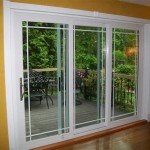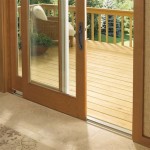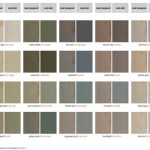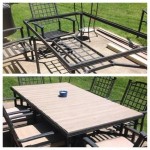Window and Patio Door Replacement: A Comprehensive Guide
Window and patio door replacement represents a significant investment in a property, impacting both its aesthetic appeal and its functional efficiency. This process involves removing existing windows or doors and installing new ones. The decision to undertake such a project necessitates careful consideration of various factors, including the condition of current installations, desired improvements in energy efficiency, and overall budget constraints. This article provides a thorough overview of window and patio door replacement, examining critical aspects from initial assessment to final installation.
The scope of window and patio door replacement can range from replacing a single damaged unit to renovating all windows and doors throughout a building. The scale of the project will directly influence the planning, cost, and timeline involved. Understanding the specific needs and goals of the replacement project is the crucial first step.
Assessing the Need for Replacement
Determining whether window and patio door replacement is necessary requires a comprehensive evaluation of the existing installations. Several telltale signs indicate the need for replacement, ranging from easily observable physical damage to less apparent performance issues. Identifying these issues early can prevent further deterioration and potential structural problems.
Visible damage, such as cracked glass, rotted frames, or broken hardware, is a clear indicator of the need for replacement. Cracks in the glass can compromise the window's insulation properties, leading to increased energy consumption. Rotted frames, often caused by moisture infiltration, can weaken the structural integrity of the window and create an entry point for pests. Broken hardware, such as latches and hinges, can compromise security and make the window difficult to operate.
Drafts and inconsistent temperatures near windows and patio doors are also strong indicators of inefficiency. These issues suggest that the windows or doors are not properly sealed, allowing air to leak in or out of the building. This can significantly increase heating and cooling costs, and create uncomfortable temperature fluctuations within the living space. Addressing these air leaks through replacement can improve energy efficiency and create a more comfortable indoor environment.
Condensation forming between the panes of glass in double- or triple-paned windows signifies a broken seal. This indicates that the insulating gas, typically argon or krypton, has leaked out, rendering the window's insulating properties ineffective. While some temporary solutions exist, such as defogging or resealing, replacement is often the most effective long-term solution to restore the window's energy efficiency. Furthermore, significant condensation can lead to mold growth, posing a health risk.
Difficulty opening or closing windows and patio doors is another common issue that may warrant replacement. Sticking frames, warped sashes, or malfunctioning mechanisms can make operation difficult and potentially damage the window or door over time. Older windows and doors may become increasingly difficult to operate due to age and wear and tear. Modern replacements often offer improved functionality and ease of use.
Increased noise infiltration from outside can also suggest the need for replacement. Older windows and doors often lack adequate soundproofing, allowing external noise to penetrate into the building. Replacement with windows and doors specifically designed for noise reduction can significantly improve the acoustic comfort of the living space. This is particularly important for properties located in high-traffic areas or near sources of noise pollution.
Selecting the Right Replacement Windows and Patio Doors
Choosing the appropriate replacement windows and patio doors involves considering several factors, including material type, style, energy efficiency, and aesthetic considerations. Understanding the various options available and their respective advantages and disadvantages is crucial for making informed decisions.
Window and door frame materials commonly include wood, vinyl, aluminum, and fiberglass. Wood offers a classic aesthetic and good insulation but requires regular maintenance to prevent rot and decay. Vinyl is a low-maintenance option that is resistant to moisture and rot, as well as being relatively affordable. Aluminum is durable and lightweight but conducts heat readily, potentially leading to energy inefficiency. Fiberglass offers excellent strength, durability, and energy efficiency, but it can be more expensive than other options. The choice of material should be based on a balance of aesthetic preferences, budget constraints, and performance requirements.
Window styles include double-hung, single-hung, casement, awning, sliding, and picture windows. Double-hung windows have two operable sashes that slide vertically, allowing for ventilation from either the top or bottom. Single-hung windows have only one operable sash. Casement windows are hinged on the side and crank open outward, while awning windows are hinged at the top and open outward. Sliding windows have two sashes that slide horizontally. Picture windows are fixed and do not open, providing unobstructed views. Patio door styles include sliding glass doors, French doors, and hinged patio doors. Sliding glass doors have two panels, one of which slides horizontally. French doors have two doors that swing open outward or inward. Hinged patio doors are similar to traditional doors and swing open in one direction. The choice of window and door style will depend on the desired aesthetic, ventilation needs, and functional requirements.
Energy efficiency is a critical consideration when selecting replacement windows and patio doors. Look for windows and doors that are ENERGY STAR certified, indicating that they meet specific energy efficiency standards. Key energy efficiency ratings include the U-factor, which measures the rate of heat transfer through the window or door, and the Solar Heat Gain Coefficient (SHGC), which measures the amount of solar heat that enters the building through the window or door. Lower U-factors and SHGC values indicate better energy performance. Selecting windows and doors with appropriate energy efficiency ratings can significantly reduce heating and cooling costs. Additionally, consider glazing options such as low-E coatings and argon gas fills, which can further enhance energy performance.
Aesthetic considerations are also important. The style and finish of the replacement windows and doors should complement the overall architectural style of the building. Consider factors such as frame color, hardware finishes, and glass options. Replacing windows and doors can significantly enhance the curb appeal of a property and increase its value. Choosing the right aesthetic elements can create a cohesive and visually appealing look for the property.
The Installation Process
Proper installation is crucial for ensuring the performance and longevity of replacement windows and patio doors. It is generally recommended to hire a qualified and experienced contractor for the installation process. A professional installer will have the necessary skills and equipment to ensure that the windows and doors are properly installed and sealed, preventing air leaks and water damage.
The installation process typically begins with the removal of the old windows or doors. This involves carefully detaching the existing unit from the frame and removing any surrounding trim or molding. It is important to take precautions to avoid damaging the surrounding wall or siding during the removal process. After removing the old unit, the opening is thoroughly cleaned and prepared for the new window or door. This may involve repairing any damage to the frame or sill and ensuring that the opening is level and square.
The new window or door is then carefully positioned into the opening and secured in place. Shims are used to ensure that the unit is properly aligned and level. The space between the window or door frame and the opening is then filled with insulation to prevent air leaks. The insulation is typically a closed-cell foam that provides a tight seal and prevents moisture infiltration. Once the insulation is in place, the exterior of the window or door is sealed with caulk to prevent water damage. The interior trim or molding is then reinstalled to provide a finished look.
After the installation is complete, the contractor should thoroughly inspect the windows or doors to ensure that they are operating correctly. This includes checking that the windows and doors open and close smoothly, that the latches and locks are functioning properly, and that there are no air leaks. The contractor should also provide the homeowner with instructions on how to properly maintain the new windows and doors. Proper maintenance, such as regular cleaning and lubrication, can help to extend the life of the windows and doors and ensure that they continue to perform optimally.

Patio Door Replacement And Installation Window World

Can You Turn A Window Into Patio Door All Need To Know 2025

Patio Door Replacement And Installation Window World

A Quick Guide To Patio Door Replacement Top 3 Options

3 Things You Should Not Do In A Patio Door Replacement

How To Remove A Window Replace It With Sliding Glass Patio Door We Re Routed Electrical Plumbing

Why Replace Sliding Glass Doors With French Blog

Patio Door Replacement All American Window Co

The Step By Patio Door Replacement Process Pella

5 Reasons To Replace Patio Doors Benefits Cost Breakdown








